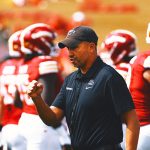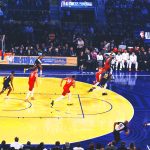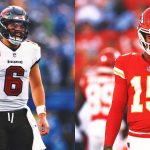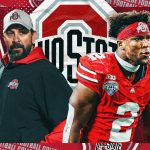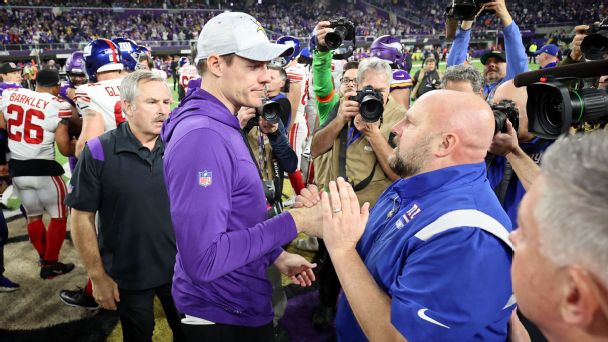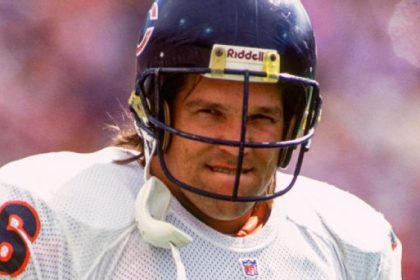
Every NFL team hiring a new head coach hopes to get the sort of boost that the New York Giants and Minnesota Vikings got from their new hires in 2022.
Brian Daboll took over a 4-13 Giants team that hadn’t won a playoff game in 11 seasons and immediately led them to a wild-card victory in Minnesota. Kevin O’Connell’s Vikings were disappointed to lose at home, but after a 13-4 season and an NFC North title, Minnesota dramatically surpassed the preseason expectations of even their most optimistic fans.
The Giants and Vikings went with a very traditional path for their new coaches. They coordinated two of the league’s best offenses, Daboll with the Bills and O’Connell with the Rams. O’Connell was one of the many coaches around the NFL to serve under Sean McVay, who was himself one of the best hires of the past decade for the Rams. Teams always chase the young, exciting offensive assistant to help spur their offenses, but McVay turned that trend into a mania.
Both teams should feel great about their coaching choices right now. But will they feel that way in a year? History suggests that one or both coaches might face more adversity in 2023. So let’s look back at recent breakout offensive coaches in their first seasons as head coaches and what happened to them the following campaign, and see if that tells us anything about what’s up next for the Giants, the Vikings and their celebrated coaches this upcoming campaign.
Jump to:
Past breakout offensive coaches
Red flags for Vikings and Giants

Breakout coaches of the past decade
Let’s start by running through the first-time NFL head coaches who helped bring their teams to immediate success over the past decade. Keep in mind that I’m exclusively considering offensive-focused coaches like Daboll and O’Connell, so I won’t be mentioning Sean McDermott’s work in Buffalo. Likewise, we’re looking for coaches who immediately turned things around, so Zac Taylor’s eventual success in Cincinnati after starting 6-25-1 in his first two seasons wouldn’t qualify. The first-time NFL head coach qualifier keeps out Andy Reid’s incredible run in Kansas City, too.
That leaves us with 10 offensive coaches who sparked instant success in taking their teams to the postseason:
-
Chip Kelly finally joined the NFL out of Oregon when he went to the Eagles in 2013. The former New Hampshire coach took over an Eagles team that had gone 4-12 in Reid’s final season and immediately pushed them to 10-6 and a division title. Philly ranked fourth in scoring offense, and Nick Foles posted video-game numbers in Kelly’s offense, averaging 9.1 yards per attempt while throwing 27 touchdowns against two picks.
Kelly lost at home in the wild-card round and never made it back to the postseason. The Eagles missed the playoffs at 10-6 the following year, and after a power play handed Kelly a football czar role at the expense of Howie Roseman, a disastrous offseason and a 6-9 record led to Kelly’s firing. He spent one year with the 49ers, going 2-14, before returning to college football.
-
Mike McCoy served as the offensive coordinator for Peyton Manning’s first season with the Broncos before taking over as head coach of the rival Chargers in 2013. Norv Turner had missed the playoffs in three consecutive seasons before departing San Diego, but McCoy coaxed new life out of Philip Rivers, who led the league in completion percentage after the new coach installed a quicker passing attack. The Chargers snuck in as a 9-7 wild card and beat the Bengals on the road before falling to Manning at the height of his powers in the divisional round.
McCoy also never made it back to the postseason as a head coach. He went 9-7 the following year, but a loss to the Chiefs in Week 17 knocked San Diego out of the playoffs. An underachieving Chargers team then went 4-12 and 5-11 the following two years, respectively, before McCoy was fired. He spent single seasons with the Broncos and Cardinals as offensive coordinator before eventually joining the Jaguars on Doug Pederson’s staff as the quarterbacks coach. McCoy got his revenge on the Chargers, I suppose, with that dramatic comeback win in Jacksonville in January.
-
Adam Gase was promoted to the coordinator role in Denver after McCoy’s departure and oversaw scoring offenses ranked first and second in the league with Manning at the helm. Gase then left for a season as the offensive coordinator with the Bears before taking over as the head coach in Miami in 2016.
Taking over for interim coach Dan Campbell, Gase pushed a team with just one playoff appearance over the prior 14 seasons back into the postseason in his first year. The Dolphins were 8-5 when Ryan Tannehill suffered a knee injury, and while backup Matt Moore got Miami over the line and into the postseason at 10-6, the Steelers battered Moore in a 30-12 wild-card loss. Gase looked like a potential building block after his first season in teal, but he never posted another winning record. He went 22-42 over his four subsequent seasons as a head coach with the Dolphins and Jets, seemingly growing further out of touch with each passing year. He hasn’t coached since being fired by the Jets after the 2020 campaign.
-
Ben McAdoo wasn’t new to the Giants franchise when he became the team’s head coach in 2016, but he was a much-needed breath of fresh air for a team that chafed at the demands of longtime head coach Tom Coughlin. It was hard to argue with what McAdoo had done as the Giants’ offensive coordinator, as the former Packers assistant had inherited an offense ranked 28th in points per game and delivered 13th and sixth-placed finishes in his two seasons (2014 and ’15) calling plays.
Given the lead role, McAdoo’s team thrived, even if the offense cratered. The Giants finished 26th in scoring offense, but a free agent spending spree pushed Big Blue into becoming the league’s second-best defense. The Giants returned to the playoffs with an 11-5 record, but they were blown out by the Packers in a week remembered more for the team’s infamous “boat picture.”
The Giants returned most of their core for the 2017 season, but everything went wrong. Odell Beckham Jr. suffered an ankle injury in preseason, aggravated the ankle later and played just four games. The defense fell apart. After a 2-9 start, the organization collectively decided to bench Eli Manning and end the longtime starter’s consecutive games streak to play Geno Smith. Manning wasn’t playing well, but the move sparked an uproar among Giants fans. After a quiet start from Smith, ownership fired McAdoo and general manager Jerry Reese and restored Manning into the starting role. McAdoo has never been close to a head-coaching opportunity since.
-
Sean McVay took over a Rams team in 2017 that had been embroiled in mediocrity or worse for nearly 15 years. The hope was that he could turn first overall pick Jared Goff around after a disastrous rookie season. The youngest coach in NFL history did much more, immediately sparking a renaissance in Los Angeles. A Rams team that hadn’t posted a winning record since 2003 went 11-5 and won the NFC West, although they were defeated by the Falcons in the wild-card round.
While other coaches on this list flailed after their breakout years, McVay thrived. Despite having his staff harvested for head-coaching opportunities year after year, McVay led the Rams to a 55-26 record in his first five seasons at the helm, including a Super Bowl loss in 2018 before a championship at home in 2021. The roster fell apart amid injuries in 2022, but McVay is unquestionably one of the best coaches in football and the best coaching hire of the past decade.
-
Frank Reich wasn’t the first choice for Indianapolis in 2018, as Josh McDaniels famously walked out on the Colts after agreeing to take the job before deciding to stay put in New England. Reich, fresh off winning a Super Bowl with Foles and the Eagles, took over an organization rocked by uncertainty. The Colts had gone 4-12 the prior season, with star quarterback Andrew Luck sidelined for the entire campaign.
Reich didn’t exactly get off to a hot start, as the former Bills quarterback began his Colts tenure by losing five of his first six games. From that point forward, though, the Colts went 9-1. Luck won Comeback Player of the Year, with Reich helping to reduce Luck’s sack rate to a league-low 2.7%. Indy upset the Texans on the road in the wild-card round before falling to the Chiefs the following week — but the future was bright in Indianapolis.
What happened next was even more impossible to predict. Luck couldn’t shake an offseason injury and chose to retire just before the 2019 season. The Colts cycled through Jacoby Brissett, Philip Rivers and Carson Wentz at quarterback, but while Reich typically got more out of his quarterbacks than the teams who had them before or after, the magic dissipated in 2022 with Matt Ryan at the helm. Reich did a good job with the hand he was dealt, but the Colts didn’t win another playoff game, and he was fired this past season. It’s a testament to his ability that Reich was immediately hired by the Panthers to take over as their head coach in 2023.
-
Matt Nagy was the coordinator successor to Doug Pederson in Kansas City under Andy Reid, and after Pederson won a Super Bowl in Philadelphia, Bears fans felt like they might be on the same track in Chicago. Nagy inherited a 5-11 team that hadn’t been to the playoffs in seven years and delivered a 12-4 season with Mitch Trubisky at quarterback in 2018. What looked to be a winnable playoff game against Foles and the Eagles ended with a missed field goal by Cody Parkey, but Nagy was named Coach of the Year for his efforts as a rookie.
The Double Doink might have been the peak of the Nagy era. The Bears lost defensive coordinator Vic Fangio after the season, and while they were fourth in scoring defense the following year, the offense never took a step forward. Nagy wasn’t able to coax any further development out of Trubisky, who had been a hot MVP candidate before the season. Nagy went 8-8 in 2019 and 2020, but while the Bears snuck into the playoffs again as the NFC’s first seventh seed during the COVID-19 season, they were easily dispatched by the Saints. Nagy was fired after a 6-11 record the following year and returned to Kansas City.
-
Matt LaFleur may have gotten off to the hottest start for any coach in league history. The former Titans offensive coordinator was an exciting hire for Packers fans who had grown tired of Mike McCarthy, and the early results in 2019 were promising. A Packers team coming off consecutive losing seasons for the first time since 1991 went 13-3 in LaFleur’s first season at the helm, though they were overwhelmed by the 49ers in the NFC Championship Game.
The Packers summoned an anger within Aaron Rodgers by taking Jordan Love in the subsequent draft, but LaFleur was able to channel that into consecutive MVP campaigns for the future Hall of Famer. Green Bay went 13-3 again in 2020 and 2021, and while LaFleur drew scrutiny for a bizarre decision to kick a field goal in the 2020 NFC Championship Game against the Buccaneers, he was rightfully lauded as one of the best coaches in football. The Packers moved on from Rodgers after an uneven 2022 season led to an 8-9 record, giving LaFleur a chance to prove his bona fides with a new quarterback in Love this upcoming campaign.
-
Kevin Stefanski followed McVay and Nagy as the AP’s pick for Coach of the Year. It wasn’t hard to understand why; the Browns had been a national laughingstock for years and hadn’t made the playoffs in 17 seasons. They had gone through a brief burst of sunlight at the end of 2018 and fallen in love with offensive coordinator Freddie Kitchens, only for the playcaller to look overmatched in his lone season as the team’s head coach in 2019. Stefanski took over in 2020 and became the first Browns coach to win 11 games in a season since Bill Belichick. The former Vikings assistant was then confined to his basement by COVID-19 for the team’s return to the postseason, but the Browns edged the rival Steelers in a 48-37 upset before narrowly falling to the Chiefs in the divisional round.
We’re getting to the point where these coaches are still proving themselves after their hot debuts, of course, but things haven’t gone as well for the Browns since that fateful first campaign. The offense fell apart the following season, as Baker Mayfield battled through a shoulder injury and seemed to lose faith in Stefanski. The team responded in kind by trading for Deshaun Watson, who was suspended for most of the 2022 season. Jacoby Brissett played well before giving way to Watson, but the former Texans standout looked awful in his six-game debut with the Browns last season. The Cleveland defense was more to blame for the team’s troubles a year ago, but with Watson entrenched on this roster for years to come, Stefanski might be coaching for his job this season.
-
Nick Sirianni is another one of our positive cases. The former Colts assistant inherited a tough situation from Pederson after a disastrous 2020 season from the Eagles and went to work. The offense got off to a slow start in 2021, but after a 2-5 opening to the season, a run-first attack unlocked better play from Jalen Hurts. The Eagles went 7-3 down the stretch to sneak into the postseason, and while they were walloped by the Buccaneers, Sirianni looked like he had his team back on track.
You know what happened next. Hurts went supernova in 2022 and nearly won MVP. The Eagles won 14 games, blew out the Giants and 49ers in the postseason and went toe-to-toe with Patrick Mahomes in the Super Bowl before eventually falling 38-35. Sirianni is now as loved as a coach can be in Philadelphia after two seasons in charge.
So, that’s 10 first-time head coaches over the past decade who made it to the playoffs during their first season in charge. Five never made it back to the postseason, with Stefanski still attempting to do so with the Browns. Nagy and Reich made one trip to the wild-card round without winning. Just three of these 10 coaches — LaFleur, McVay and Sirianni — won a playoff game after their impressive first campaigns in charge.
Giants and Vikings fans who are thrilled with their current coaches are surely expecting Daboll and O’Connell to buck the trend and be more like the McVays and Siriannis of the world than the Gases or McAdoos. Let’s see whether we can draw any conclusions about their chances from what happened in their first seasons in charge. There are five red flags in the résumés of either the Giants or Vikings that stand out as concerns in 2023. Were they also warning signs for some of the disappointing teams in past years?
Red flag No. 1: Relying on fourth-quarter wins
A win is a win in the record books. If you want to sustain your success, though, you’re probably better off winning games in the first three quarters than you are by waiting to pull things out in the final stanza. Both the Giants and Vikings thrived by earning victories in the fourth quarter last season; Kirk Cousins had a league-high eight fourth-quarter comeback wins after racking up 14 across his prior 10 seasons combined, while Daniel Jones picked up four with the Giants.
To measure just how dependent these teams were on what they did in the fourth quarter, we can split their win expectancy added (WPA) out by quarter. Across the first three quarters of their games in 2022, the Vikings actually cost themselves 1.6 wins, which was in line with how the Rams and Broncos performed in the first three quarters of their games. The Giants were also below-average, generating minus-1.2 WPA over the first 45 minutes of their contests.
In the fourth quarter, of course, they turned things around. The Giants generated 2.2 WPA in the final quarter and overtime, which was the second-best mark in football. The Vikings were off the map. Cousins & Co. captured a staggering 6.1 WPA in the fourth quarter and overtime, putting them nearly four full wins clear of anybody else in 2022. Going back through 2009, no team had previously generated five WPA in the fourth quarter in a single season.
The gap between how the Vikings performed in the fourth quarter and the first three quarters, then, was 7.7 wins. No team since 2009 has improved their lot in the fourth quarter quite as significantly as the 2022 Vikings. And the Giants, who improved by 3.4 wins in the fourth quarter, rank 33rd out of 448 teams over that same stretch.
None of the teams on our list above played this sort of way, which might be a blessing for the Giants and Vikings. The bad news, unfortunately, is that teams that have played that way generally took a step backwards the following season. The 32 teams that finished between the Vikings and Giants weren’t able to keep up their fourth-quarter heroics the following season; they went from generating a combined 90.2 WPA in the fourth quarter to just 19.2 the subsequent year. And their overall record declined by an average of 1.7 wins per 17 games.
Red flag No. 2: Relying on wins in close games
Well, you knew this was coming. I like using a team’s record in games decided by seven points or fewer as the best measure of what they did in close games, but stretching it to eight points might do more justice to what the Giants and Vikings did a year ago. The Giants went 8-4-1 in games decided by eight or fewer, with their only win by more than eight points coming in a blowout victory over a tanking Colts team with Foles and Sam Ehlinger at quarterback in December.
The Vikings, meanwhile, were without historical precedent. They became the first team in NFL history to go 11-0 in games decided by eight points or fewer. No team had ever gone 9-0 or 10-0 in those same contests. A surprising number of teams who posted gaudy records in one-score games during the regular season then lost a close game in the playoffs, with the 2020 and 2021 Packers as recent examples. So of course, the Vikings proceeded to then lose by seven points to the Giants in the wild-card round.
Teams that win all of their close games in a given year don’t keep that up the following season. If we go back through 1950 and look at the NFL franchises that played at least five games decided by eight points or fewer and went undefeated in those contests, they weren’t able to hold onto their mastery of the narrow margins. After going 110-0 in those close games, those teams went a combined 73-68-4 (.518) the following season. Convincing yourself you can win coin flips is a dangerous way to survive in the NFL.
Surprisingly, only a handful of the teams in our playoff comparables were disproportionately successful in their one-score games. One of those teams was the 2019 Packers, who kept up their magic in 2020 and 2021 (at least in the regular season) before finally coming back to Earth this past year.
The others looked like mirages at the time and did not meet expectations. The Dolphins and Giants were both on my list of teams likely to decline in 2017 because of their record in close games, and after going a combined 16-5 in games decided by eight points or fewer the prior season, the Fins and Giants went 7-8 in those same contests the following season. Their overall records collapsed by a combined 12 wins in the process.
The 2020 Browns were a feel-good story, but they also made my list of teams likely to decline the following season and dropped from 11-5 to 8-9. Their record in close games dropped from 7-2 to 5-6. Those examples — and the others we have over the years — don’t bode well for the Giants and Vikings in 2023.
Red flag No. 3: Relying on avoiding takeaways
Our first two concerns have leaned on the Vikings, so let’s go with one more focused on the Giants. Good teams don’t turn the ball over, of course, but sustaining extremely low giveaway rates is more difficult than it might seem. It’s unique — protecting the football is a strong indicator of what wins games in a given season, but it’s also a strong indicator of which teams are likely to decline the following season.
The Giants thrived on offense by protecting the football last season. Jones posted the league’s lowest interception rate at 1.1%, marking the third consecutive season in which he reduced his pick rate. Daboll’s offense turned the ball over on just 7.3% of their possessions in 2022, which was the lowest mark in football. Their 16 giveaways were the second-fewest of any team in football, with only the Lions turning the ball over less often.
If we just take the top five teams in total giveaways each season from 2002 through 2021 and track what they did the following season, Giants fans might have a reason to be worried. Just 25 of those 100 teams made it back to the list the following season. The average team fell down the rankings by an average of nearly 10 spots and generated an average of 6.3 more turnovers than they had the prior season. Unsurprisingly, their win totals also declined: Those teams fell off by an average of 1.4 wins. (Both of those numbers are adjusted for a 17-game schedule.)
Generally, though, this hasn’t been worrisome for our recent first-year offensive coaches. Only three of those 10 teams we talked about earlier finished in the top five in giveaways, and two of them were the 2019 Packers and 2021 Eagles, who only built on their success. The 2013 Eagles fell from fourth in giveaways to dead last the following season, and it likely cost Kelly a playoff berth.
Jones has improved at protecting the football with each season, and while it’s tough to ask him to run a 1.1% interception rate again, chances are that he’ll look more like the player we saw in 2021 (1.9%) than the rookie from 2019 (2.9%). Daboll is expected to open up the offense a bit after Jones threw the shortest average pass of any quarterback in football last season, which creates the possibility of more giveaways; striking that fine balance will be essential for him in 2023.
One other thing that might help the Giants: Their takeaway rate is likely to improve in 2023. Despite posting one of the lowest giveaway rates in football this past season, the Giants finished with a turnover margin of only plus-3. Don Martindale’s defense forced a mere 19 takeaways, which was 25th in the NFL. Their six interceptions were tied for the fewest of any team in the NFL with the Raiders. While the Giants are likely to turn the ball over more often in 2023, they’re also probably going to force more turnovers when they’re on defense.
Red flag No. 4: The Plexiglass Principle
An old Bill James corollary, the Plexiglass Principle holds that teams that make a dramatic rise in some element of their play in a given season almost always give some of those gains back the following season. As an example, the Patriots jumped from 27th in the league in scoring offense during Cam Newton’s season at the helm in 2020 to sixth in 2021. After coordinator Josh McDaniels left for Las Vegas and was replaced by Joe Judge and Matt Patricia, the Patriots split the difference and were 17th in points per game in 2022.
If we use a more robust metric like DVOA, we can see there’s an obvious candidate for concern here. The Vikings actually took a step backward on offense by DVOA in O’Connell’s first season at the helm, dropping from 16th to 20th. Daboll, meanwhile, sparked an offensive resurgence in New York in 2022, with the Giants jumping from dead-last in offensive DVOA to 10th.
Naturally, given that our 10 recent example teams hired offensive coaches and then made the playoffs in Year 1, several of them experienced this sort of spike. What happened next usually wasn’t as pretty:
-
The 2013 Eagles jumped from 26th to third in DVOA and then fell back to 14th the following year, as Foles struggled to stay healthy and wasn’t really the Peyton Manning clone his numbers suggested during Kelly’s first year in charge.
-
The 2013 Chargers went from 24th to second in offensive DVOA before dropping down to 10th in 2014. Philip Rivers’ interceptions jumped from 11 in 2013 to 18 in 2014, while the Chargers’ rushing attack averaged just 3.4 yards per carry with Ryan Mathews sidelined for most of the year.
-
The 2016 Dolphins improved from 23rd to 14th in offensive DVOA, only to decline to 27th the following season. They had an excuse, of course, as Tannehill was sidelined by a torn ACL over the summer and missed the entire season. Tannehill came back for 11 games in 2018, though, and the Dolphins ranked 26th that year.
-
The 2017 Colts rose from 30th to 10th in offensive DVOA. They have an even better excuse, as Luck retired and was replaced by Brissett on short notice. Reich still managed to eke out a 19th-place finish in that metric in 2018, but even though the result is in line with the principle, it hardly feels like this fits in with the group.
-
The 2017 Rams defied the glass ceiling, as they soared from 32nd to sixth in offensive DVOA and then improved to second the following season.
-
The 2018 Bears improved from 28th to 20th in offensive DVOA, then fell back to 25th the following season. This one is even starker using scoring offense: The Bears went from 29th to ninth in Nagy’s first season, then back down to 29th the following season.
-
The 2020 Browns were 20th in offensive DVOA during the Kitchens campaign, rose up the ranks to ninth in Stefanski’s first season in charge and then fell back to 14th the following year.
-
The 2021 Eagles are our other positive case, as Hurts’ unit improved from 28th to 11th during Sirianni’s first season in charge, then took a step further and finished third last season.
This isn’t limited to the teams in our group. If we go back through 1994 and look at the teams that improved by 15 spots in the offensive DVOA rankings in a given year, more than 80% of them took a step back by the same metric the following season. The average offense in that group fell off by about seven spots in the rankings, which would bump the Giants just on the wrong side of league average.
Could the Giants be the exception to that group? Of course. I’m sure Giants fans will point to the playmakers added at receiver and a second year for Jones in Daboll’s system as reasons for them to continue to make strides, and those are very reasonable arguments. At the same time, every one of the teams in that group had their own arguments for continuing to thrive, and most did not. The Giants weren’t a very healthy team in 2022, but Jones and Barkley were healthy for the entire season for the first time in their four campaigns together. An injury to the quarterback or halfback alone might be enough to scuttle New York’s chances of staying in the top 10 on offense in 2023.
Red flag No. 5: Their defenses weren’t along for the ride
This one seems simple. If you hire an offensive guru and improve, it helps to see that improvement come on both sides of the football. We didn’t really see that for the Giants or Vikings in 2022. Those teams had a habit of coming up with big plays on defense in the fourth quarter, but neither was effective on a snap-by-snap basis, with the Vikings ranking 27th in DVOA and the Giants placing 29th. If you prefer EPA per play, the Vikings were 22nd and the Giants were 28th.
When our breakout teams didn’t field a good defense, their success often dissipated in Year 2. The 2013 Eagles, 2013 Chargers, 2016 Dolphins and 2020 Browns all ran out defenses ranked 20th or worse in DVOA during their unexpected playoff runs. The only team in that group that struggled on defense and improved dramatically the following season were the 2021 Eagles, who were 25th in DVOA before adding James Bradberry, C.J. Gardner-Johnson and Haason Reddick and finishing sixth a year ago. (Of course, they’re now subject to the Plexiglass Principle.)
The Giants and Vikings can make cases for improving on defense in 2023. The Giants have a talented front seven and used a first-round pick on corner Deonte Banks. The Vikings were a mess in the secondary and imported a talented young cornerback in Byron Murphy Jr., although he’ll replace Patrick Peterson, Minnesota’s top corner in 2022. Daboll has a respected defensive coordinator in Martindale, while O’Connell fired veteran Ed Donatell after one season and replaced him with well-regarded former Dolphins head coach Brian Flores.
What’s important to keep in mind, though, is that improving a little bit on that side of the ball isn’t likely to produce superior results to what these two teams enjoyed in 2022. The Giants and Vikings each posted a record that was out of line with how they respectively played this past year. History tells us that they’ll need to drastically improve their underlying level of performance to simply keep their record, let alone take a step forward in 2023.
Comparing them to teams from the recent past might be foolish. It’s only a 10-team sample. Every team’s circumstances are different, and some of the ways the Giants and Vikings won games last year (notably their emphasis on the fourth quarter) were unique among breakout teams from past years. Great coaches like McVay and LaFleur were able to keep their new teams’ level of play up for years to come, and there’s no reason for us to believe that Daboll and O’Connell are more like Gase or McAdoo.
At the same time, the evidence certainly suggests that the odds are stacked against the two breakout coaches in the NFC. Their teams won in unsustainable ways a year ago, and neither roster added drastically more talent this offseason. There are no guarantees in the NFL, and it’s difficult to project what will happen next year, let alone two or three years down the line. The preponderance of evidence, though, suggests that these two teams will take at least one step backward in 2023.

